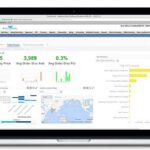Introduction: Setting the Stage for Success
1. Project Overview: Provide a brief overview of the BI project, including its purpose, scope, and key objectives.
2. Stakeholder Identification: List and categorize stakeholders involved in the BI project, specifying their roles and responsibilities. Identify both primary and secondary stakeholders.
Defining Business Requirements
3. Business Goals and Objectives: Articulate the overarching goals and specific objectives the organization aims to achieve through the BI implementation.
4. Key Performance Indicators (KPIs): Identify the critical metrics and KPIs that stakeholders will use to measure the success of the BI solution. Ensure alignment with overall business goals.
5. Data Requirements: Specify the types of data needed for analysis and reporting. Define sources, formats, and integration requirements.
6. Reporting and Dashboard Needs: Detail the reporting formats and dashboard components required by different user groups. Consider visualizations, interactivity, and customization preferences.
7. Data Governance and Security: Define data governance policies, including data ownership, access levels, and security requirements. Address compliance considerations relevant to the organization.
Technical Specifications
8. Data Sources and Integration: Enumerate the data sources to be integrated into the BI solution. Detail any existing systems, databases, or external sources that need integration.
9. Technology Stack: Specify the preferred technology stack for the BI solution, including the choice of BI tools, databases, and integration platforms.
10. Scalability Requirements: Define the expected growth and scalability needs of the BI solution over time. Consider the potential increase in data volume and user base.
11. Performance and Response Time: Set expectations for system performance and response times. Define acceptable latency levels for data retrieval and report generation.
User Requirements
12. User Profiles: Identify and categorize different user groups involved in BI activities. Define their roles, responsibilities, and specific BI needs.
13. Training and Support: Outline the training requirements for users at different levels of proficiency. Specify the need for ongoing support and resources for user adoption.
14. Accessibility and Usability: Define requirements related to the accessibility and usability of the BI solution. Consider the need for mobile responsiveness and intuitive interfaces.
Implementation Timeline and Budget
15. Project Timeline: Provide a realistic timeline for the BI implementation, including key milestones, testing phases, and the expected go-live date.
16. Budget Allocation: Specify the budget allocation for the entire BI project. Break down costs related to software licenses, hardware, training, and any external consulting services.
Testing and Quality Assurance
17. Testing Procedures: Outline the testing procedures and methodologies to ensure the accuracy and reliability of the BI solution. Include plans for user acceptance testing (UAT).
18. Quality Assurance: Detail the quality assurance processes, including data validation, error handling, and ongoing monitoring strategies.
Conclusion: Ensuring a Seamless BI Journey
A well-crafted Business Intelligence Requirements Gathering Template serves as a foundational document, aligning stakeholders and providing clarity on project objectives. The meticulous consideration of business, technical, and user requirements ensures that the BI solution not only meets current needs but is also adaptable to the evolving landscape of business intelligence. As organizations embrace the power of data-driven decision-making, a robust requirements gathering template becomes the cornerstone for a successful BI journey.




